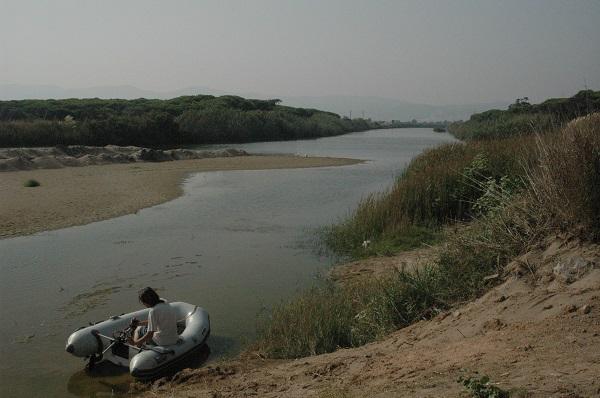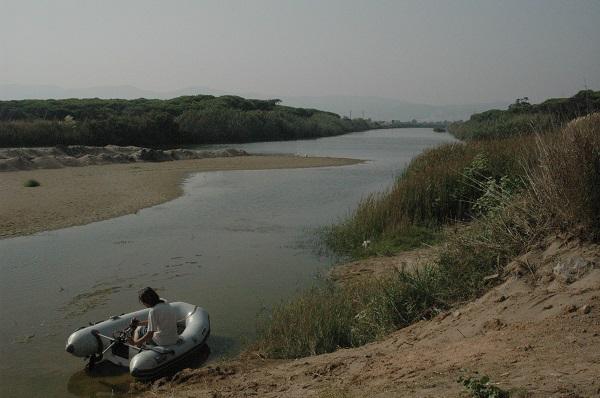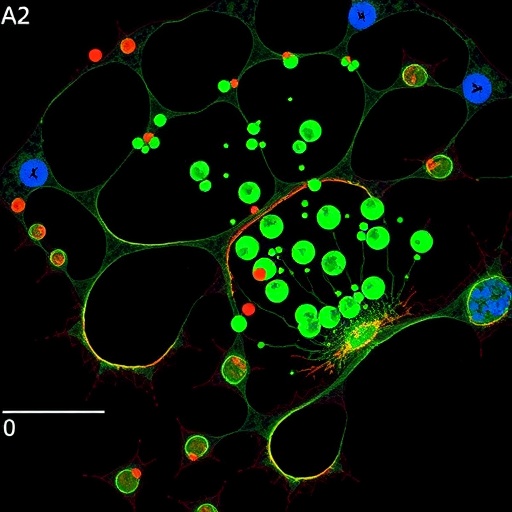
Credit: University of Barcelona
What are the most aggressive chemical products for the environment? What areas of the planet have more pollutants? Can we detect toxic products which are hard to identify? How can we protect biodiversity and natural ecosystems better? Degradation of the environment and natural resources, the loss of biodiversity, impacts on health and the crises on food safety are some of the effects of chemical products being thrown into the environment due human activity.
Now, an international study with the participation of the expert Miguel Cañedo-Argüelles, member of the Faculty of Biology and the Catalan Water Research Institute of the University of Barcelona (IdRA), and the University of Vic – Universitat Central de Catalunya (UVic-UCC) as well, determines the twenty-two main questions to consider in order to manage sustainably the environmental risks that are related to the chemical products in Europe.
The study, published in the journal Environmental Toxicology and Chemistry, wants to shape a new guideline -with a more global and coordinated perspective- for several social and economic sectors in the field of chemical products and management of environmental risks in Europe.
The new study is part of the initiatives by Global Horizon Scanning Project (GHSP), Society of Environmental Toxicology and Chemistry (SETAC), to identify the main factors that alter the environmental quality in several geographical areas (Europe, Africa, North-America, South-America and Asia-Pacific. In particular, the study results from a 2015 initiative during the SETAC conference in Barcelona, in which the main heads of some consultancy groups of the entity debated on key aspects of chemistry and environment that were mentioned to more than 2000 members of SETAC.
Is a more sustainable environmental future possible?
Ending with poverty and inequalities, promoting education and dignified work, and protecting the environment around the planet are some of the objectives for the UN Agenda 2030 for the Sustainable Development. With a changing view, the Agenda 2030 represents a model guideline on economic, social and environmental sustainability for all member states that joined in Septmber 2015.
The new scientific study wants to assess the interaction between several factors that affect natural ecosystems (chemical products, hydrological alterations, environmental degradation, etc). According to Miquel Cañedo-Argüelles, member of the research group Freshwater Ecology, Hydrology and Management (FEHM) of the UB and the BETA-TECNIO Technological Center of UVic-UCC, "ecosystems are exposed to many stress factors and scientists analyse those separately due technical restrictions".
"However, these factors are interacting and this interaction does not result in the mix of individual effects, since there can be synergies or antagonisms", adds Cañedo-Argüelles, who presided the consultancy group on freshwater salination during the SETAC conference.
Considering chemical products in isolation "can result in a simplistic assessment that doesn't account for the complexity of the real world", notes professor Alistair B.A. Boxall (University of York), one of the main authors in the study. "The new study -he continues- highligts international scientists' research priorities and our key knowledge gaps when it comes to the risks and impacts of chemicals. The study aims to help focus scientific effort on the questions that really matter and inform decisions about the type of research needed to update policies and regulations".
Emerging pollutants: new threats for the global environment
According to the experts, we will need to identify the ecosystems with a higher risk of degradation due chemical pollution in Europe and define which the top ones for biodiversity preservation are. In this situation, it will be necessary to know about the potential effect of emerging pollutants, which usually derive from pharmaceutical products or cosmetics and are not regulated by any specific legislation. According to Cañedo-Argüelles, "there are currently about 3,000 drugs in the market that get to the environment, and in most of those cases we do not have much information on their potential impact on biodiversity".
It is also important for the ecotoxicological studies to adopt the real situation of the natural environment to know the ecosystem potential response to pollutants. "Studies on the limit concentration of a certain substance in the environment are usually based on laboratory trials with one or a few species, like the planktonic crustacean Daphnia magna", notes Cañedo-Argüelles.
"But there are many species living in ecosystems and interacting among them. Pollutants affect different species and can alter trophic interactions, so these create complex and unexpected responses in the whole ecosystem which affect the level of populations and communities. Therefore, a good option for future studies would be to combine laboratory trials with the use of mesocosms -artificial ecosystems controlling environmental conditions- and if necessary, carrying field studies out", states the researcher.
###
Experts from the Rovira i Virgili University, the Hunting Resources Research Institute (IREC-CSIC-UCLM-JCCM) and the IMDEA Water Institute (University of Alcala) take part in this new study, which shapes the scenario of future challenges in environmental management at a global scale. In this context, GHSP is also promoting the recently published study on the state of play in South American countries (Furley et al., 2018), within the field of the initiatives by SETAC "to improve the research effort on the impacts of the chemical products in the environment", concludes professor Boxall.
Media Contact
Rosa Martínez
[email protected]
0034-934-031-335
http://www.ub.edu
Original Source
https://setac.onlinelibrary.wiley.com/doi/full/10.1002/etc.4205 http://dx.doi.org/10.1002/etc.4205





